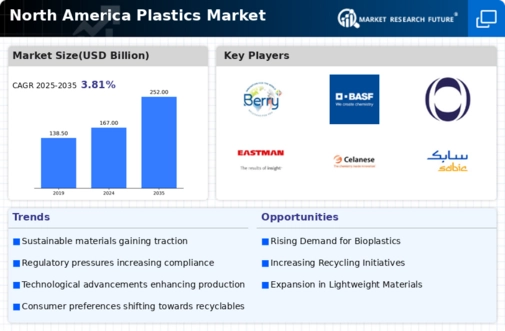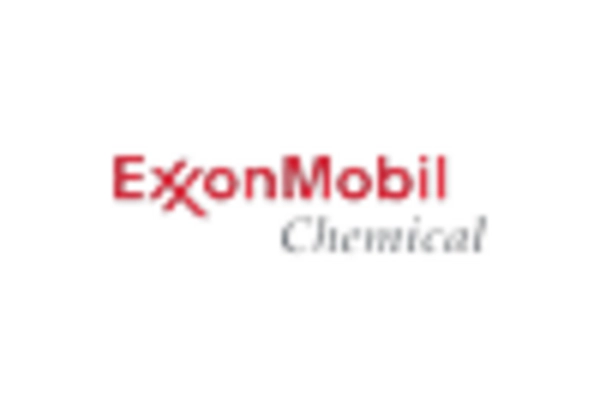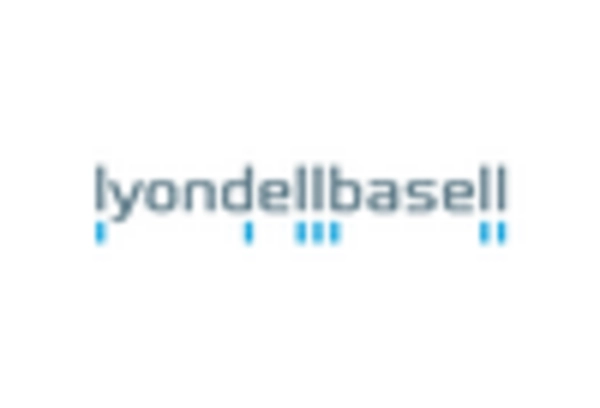Growth in Packaging Applications
The packaging sector remains a dominant force in the plastics market, driven by the need for efficient and sustainable packaging solutions. In North America, the demand for flexible packaging is expected to grow at a rate of around 4% annually, as companies seek to enhance product shelf life and reduce waste. This growth is largely attributed to the rise of e-commerce and the need for protective packaging that can withstand shipping conditions. Additionally, innovations in biodegradable plastics are gaining traction, appealing to environmentally conscious consumers. As a result, the plastics market is experiencing a transformation, with companies investing in sustainable packaging technologies to meet evolving consumer demands.
Expansion of the Construction Sector
The ongoing expansion of the construction sector is a vital driver for the plastics market. As urbanization continues to rise, the demand for construction materials, including various types of plastics, is expected to increase. In North America, the construction industry is projected to grow by approximately 3.5% annually, with plastics being utilized for insulation, piping, and other applications. This growth is fueled by the need for durable and lightweight materials that can withstand environmental challenges. Furthermore, the trend towards sustainable building practices is likely to enhance the use of recycled plastics in construction, thereby positively impacting the plastics market.
Rising Demand for Lightweight Materials
The increasing demand for lightweight materials in various industries is a crucial driver for the plastics market. Industries such as automotive and aerospace are actively seeking to reduce weight in their products to enhance fuel efficiency and performance. For instance, the automotive sector is projected to utilize plastics to replace traditional materials, potentially leading to a market growth of approximately 5.5% annually. This shift not only contributes to lower emissions but also aligns with consumer preferences for more efficient vehicles. As manufacturers continue to innovate, the plastics market is likely to see a surge in demand for advanced lightweight plastic composites, which are essential for meeting these industry standards.
Increased Investment in Recycling Technologies
The push for improved recycling technologies is significantly influencing the plastics market. With rising environmental concerns, there is a notable increase in investments aimed at enhancing recycling processes and infrastructure. In North America, the recycling rate for plastics is currently around 9%, indicating substantial room for improvement. Companies are exploring advanced recycling methods, such as chemical recycling, which can potentially convert waste plastics back into raw materials. This shift not only addresses waste management challenges but also creates new opportunities within the plastics market. As these technologies develop, they may lead to a more circular economy, where plastics are reused and recycled more efficiently.
Technological Innovations in Manufacturing Processes
Technological innovations in manufacturing processes are reshaping the landscape of the plastics market. Advancements such as 3D printing and automation are enabling manufacturers to produce complex plastic components with greater efficiency and precision. In North America, the adoption of 3D printing in the production of plastic parts is expected to grow significantly, potentially reaching a market value of $2 billion by 2027. These innovations not only reduce production costs but also allow for customization and rapid prototyping, which are increasingly important in competitive markets. As manufacturers embrace these technologies, the plastics market is likely to experience enhanced productivity and a shift towards more innovative product offerings.


















Leave a Comment